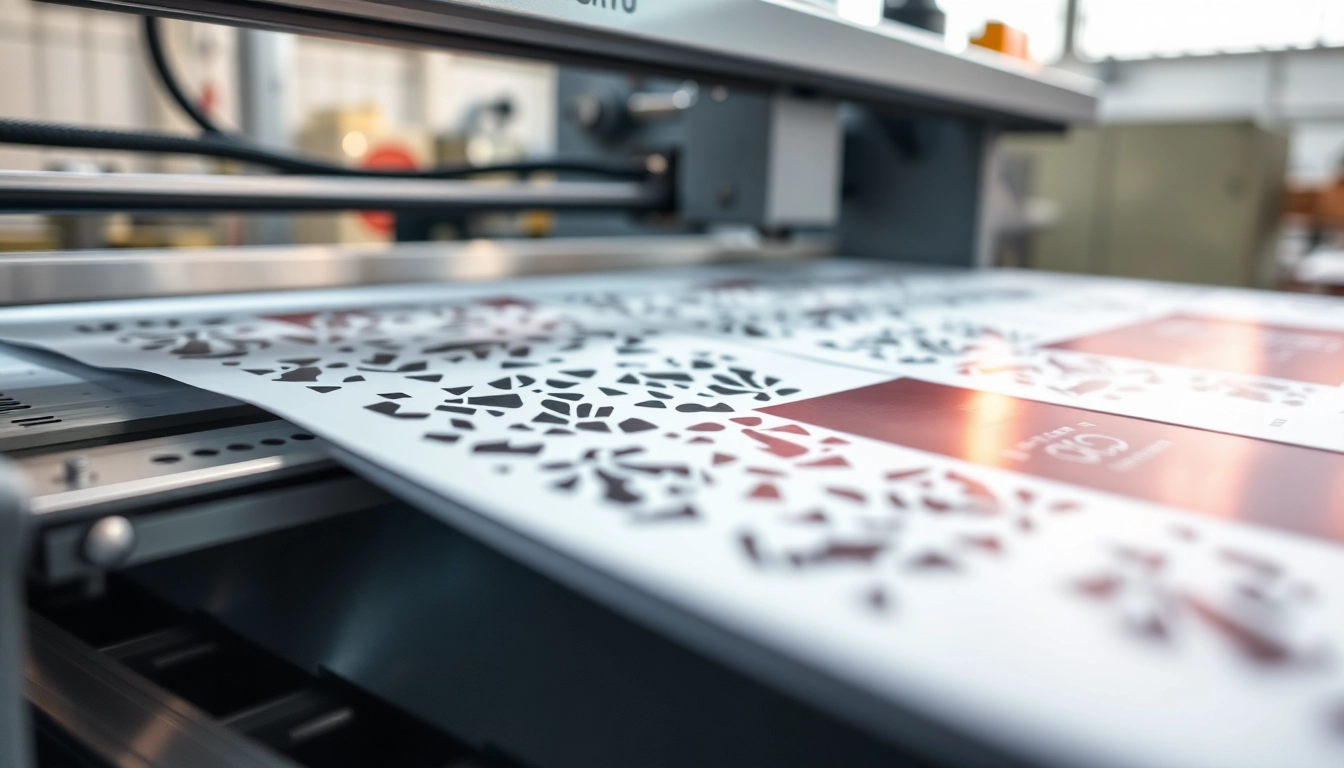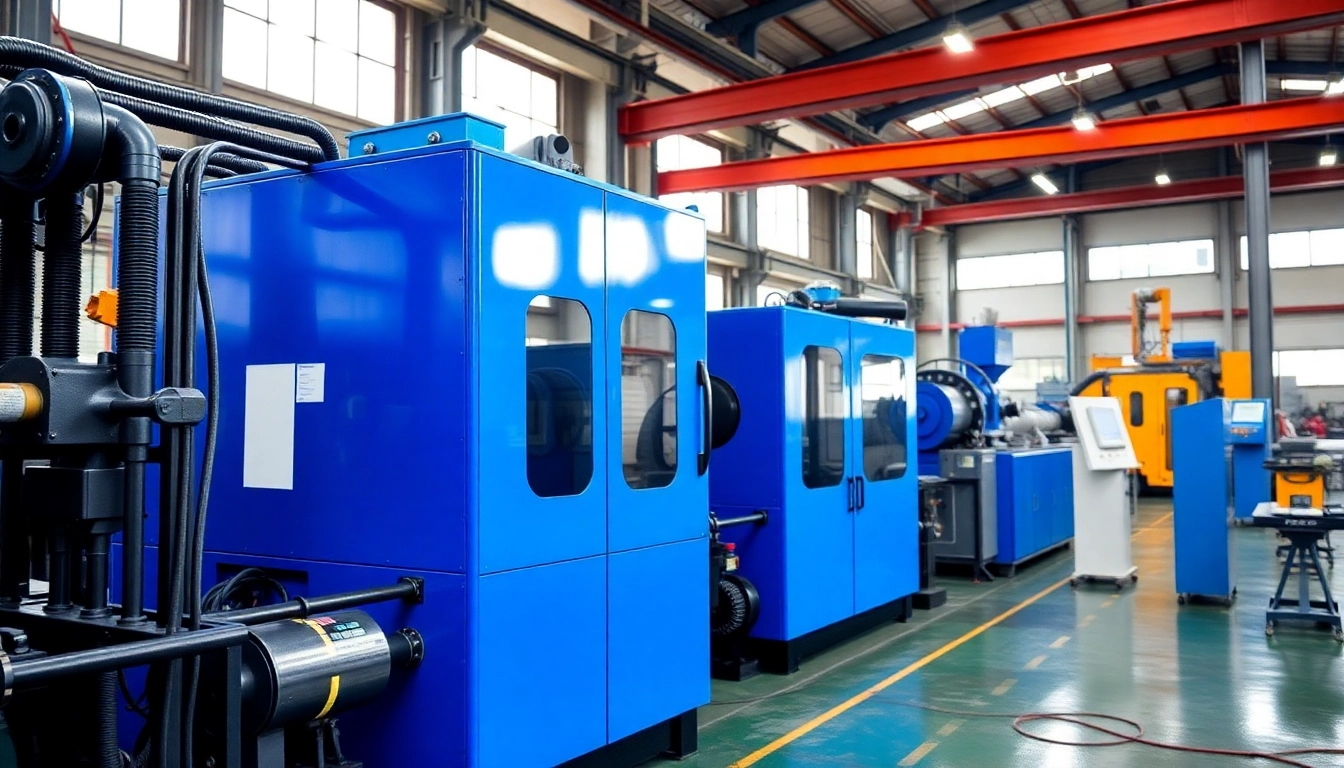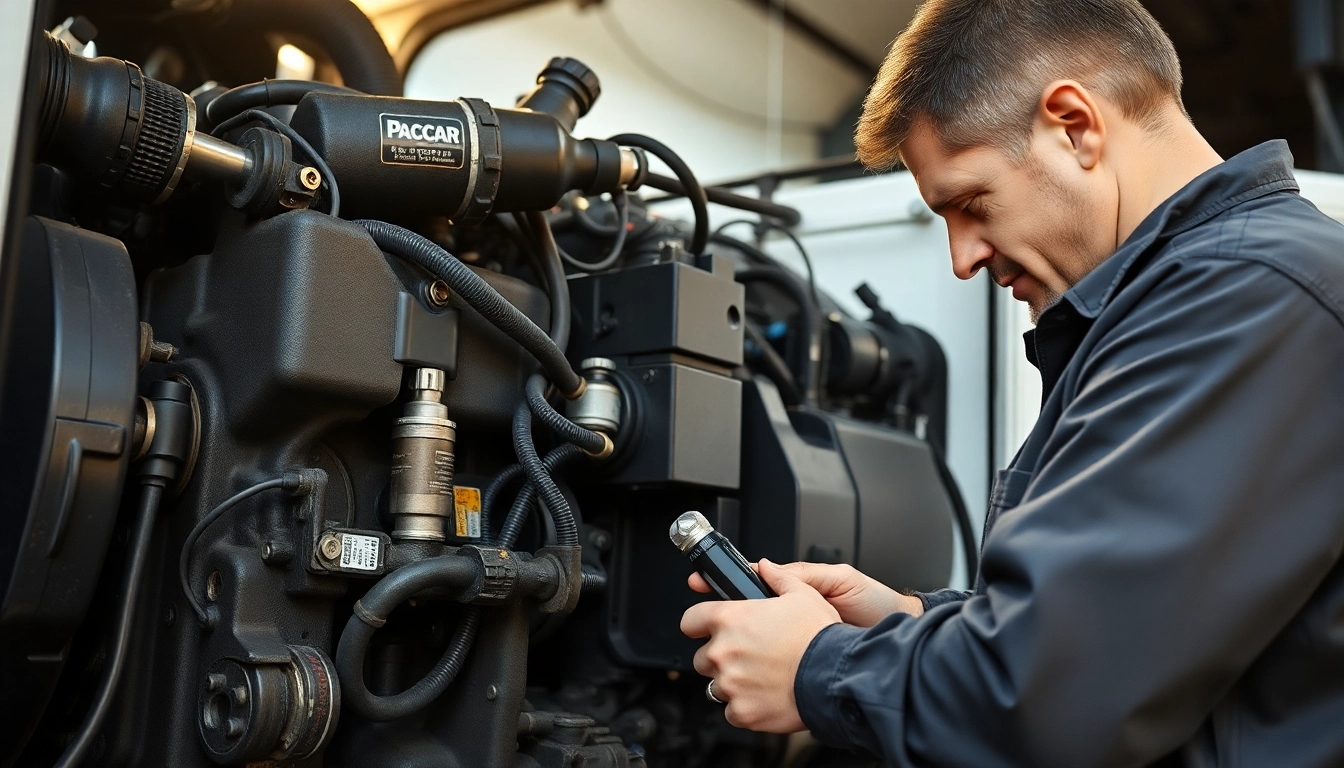Understanding Precision Die Cutting
What is Precision Die Cutting?
Precision die cutting is a manufacturing process used to create exact, intricate shapes from various materials, including paper, plastics, metals, and composites. This technique employs a specialized die—often made from hardened steel—to achieve accurate shapes and sizes based on a predetermined design. By utilizing advanced machinery and technology, such as CNC (Computer Numerical Control) systems, precision die cutting ensures that components are cut with minimal tolerances, resulting in parts that are remarkably uniform in quality and size.
The process entails feeding material into a die cutting machine, which applies pressure to the die, cutting through the material to create the desired shapes. Applications of precision die cutting span numerous industries, including automotive, electronics, medical, and packaging, showcasing its versatility and essential role in modern manufacturing.
Applications of Precision Die Cutting
Precision die cutting is instrumental in various applications across multiple sectors. In the automotive industry, for example, it is used to manufacture parts like gaskets, seals, and insulation materials. In the medical field, precision die cutting is utilized to produce items such as bandages, surgical drapes, and components for diagnostic devices, where quality and precision are critical.
Other industries that benefit from precision die cutting include:
- Packaging: Custom boxes and packaging materials that require unique shapes and sizes.
- Electronics: Insulators and circuit boards that require painstaking precision for proper functionality.
- Textiles: Cutting fabrics and materials for apparel, upholstery, or industrial applications.
- Signage: Creating distinctive shapes and designs for commercial and retail signage.
Benefits Over Traditional Cutting Methods
Precision die cutting presents several advantages over traditional cutting methods, which include:
- Accuracy: The ability to produce intricate shapes with tight tolerances that traditional methods may struggle to achieve.
- Efficiency: High-speed production capability, allowing for a faster turnaround time compared to manual cutting methods.
- Cost-effectiveness: Reduced labor costs and material wastage due to precise cutting, making it a more economical choice for large-scale manufacturing.
- Consistency: Ensures uniformity in bulk production, which is essential for products that need to fit together perfectly.
Types of Precision Die Cutting Techniques
Rotary Die Cutting Explained
Rotary die cutting is a cutting technique where a cylindrical die is used to cut materials. Unlike traditional flatbed die cutting that moves the material back and forth, rotary die cutting allows the material to pass continuously through the machine, significantly increasing production speeds. This method is ideal for high-volume projects like labels, medical devices, and packaging.
One major advantage of rotary die cutting is its ability to combine processes such as inline printing, die cutting, and finishing. However, it is best suited for thin materials like paper, film, and adhesive sheets rather than thicker substrates, which may require flatbed cutting.
Flatbed vs. Rotary Die Cutting Comparison
Choosing between flatbed and rotary die cutting depends largely on the material, the complexity of the parts being produced, and cost considerations. Here is how they compare:
| Criteria | Flatbed Die Cutting | Rotary Die Cutting |
|---|---|---|
| Setup Time | Longer setup time due to the need for custom dies | Shorter setup time, especially for continuous production |
| Material Types | Suitable for thicker materials | Best for thinner, flexible materials |
| Accuracy | High accuracy for intricate cuts | Consistently accurate for large volumes |
| Production Speed | Slower production speed | High production speed |
Laser Cutting as a Precision Die Cutting Method
Laser cutting represents a highly advanced method in precision die cutting. In this technique, focused laser beams are directed onto materials, which effectively melt or vaporize the material in a precise pattern. This method stands out particularly for its capability to create complex geometries with very tight tolerances.
While laser cutting is incredibly versatile and can handle a variety of materials, including metals, plastics, and composites, it can be slower than die cutting methods for larger runs due to the intricate nature of the process. Despite this, it offers unparalleled flexibility for prototyping and is a valuable addition to traditional die cutting methods.
Key Considerations for Precision Die Cutting
Tolerances in Die Cutting
Understanding tolerances is crucial to ensure the quality of die-cut parts. Tolerances refer to the allowable deviation in dimensions, and achieving them is essential for functionality, especially in high-precision applications such as electronics and medical devices. Typical tolerances for precision die cutting can range from +/- 0.005 inches to +/- 0.1 inches, depending on material properties and cutting methods. It’s important to collaborate closely with your die cutting vendor to clearly define tolerances during the design stage.
Material Selection for Best Results
The choice of materials significantly impacts the success of precision die cutting projects. Different materials respond uniquely to cutting processes, and factors such as thickness, flexibility, and composition can influence the final product’s quality. Common materials used in die cutting include:
- Paper and Cardboard: Widely used for packaging, promotional materials, and crafts.
- Plastics: Like acrylics and PVC, typically used for durable items like signs and displays.
- Foams: Found in cushioning and insulation applications.
- Metals: Employed when structural integrity is needed, such as for automotive and aerospace components.
Common Challenges and Solutions
The precision die cutting process can present challenges that could hinder production efficiency and product quality. Some common challenges include:
- Material Variability: Differences in material thickness and density can lead to inconsistent results. Solution: Conduct comprehensive tests to establish a good understanding of the material behavior before mass production.
- Die Wear: Regular wear and tear on dies can affect accuracy. Solution: Implement a regular maintenance schedule to inspect and replace dies as necessary.
- Complex Designs: Intricate designs are harder to reproduce consistently. Solution: Optimize designs for manufacturing, employing features that are easier to cut while maintaining product integrity.
Choosing the Right Precision Die Cutting Partner
Factors to Evaluate When Selecting a Vendor
Choosing the right precision die cutting partner can greatly impact the success of your projects. Several factors must be considered, including:
- Experience and Expertise: A vendor with a proven track record and experience in your specific industry will be better equipped to understand your needs.
- Technology and Equipment: Ensure the company uses the latest die cutting technologies to achieve better quality and efficiency.
- Quality Assurance Processes: Look for vendors who have stringent quality control measures in place to ensure product consistency.
- Customer Support: Evaluate their communication style and responsiveness, as good support can facilitate smoother project execution.
How to Request Quotes Effectively
When requesting quotes from potential precision die cutting vendors, provide as much detail as possible to receive accurate cost estimates. Important elements to include in your request are:
- Design files/files specifications
- Material types and thickness
- Expected production volumes
- Delivery timelines
- Quality tolerance requirements
By ensuring you furnish comprehensive information, you minimize the risk of miscommunication and ensure the quotes received closely reflect your project needs.
Reading Reviews and Testimonials
Before finalizing a precision die cutting partner, consider checking customer reviews and testimonials. Feedback from previous clients can provide insights into factors such as reliability, quality, and customer service. Platforms like Google Reviews and industry-specific forums are good sources of genuine customer experiences.
Future Trends in Precision Die Cutting
Innovation in Die Cutting Technologies
The die cutting industry is witnessing rapid advancements in technology and techniques, with innovations that aim to enhance efficiency and precision. One of the most promising developments is the integration of AI and machine learning into die cutting processes, optimizing designing and production workflows. By analyzing data from past projects, these technologies can anticipate challenges and improve efficiency in real-time.
Eco-Friendly Practices in Die Cutting
As industries strive for sustainability, eco-friendly practices in precision die cutting are becoming increasingly important. This includes utilizing biodegradable materials, optimizing material usage to reduce waste, and adopting energy-efficient machinery. A growing number of businesses are evaluating their supply chains to incorporate environmentally responsible die-cutting materials and processes.
The Role of Automation in Precision Die Cutting
Automation is revolutionizing precision die cutting, paving the way for quicker setups and reduced labor costs. Automatic feeding systems, integrated tracking for quality assurance, and robotics for loading and unloading components are key advancements. These innovations enhance productivity and enable manufacturers to meet high demand without compromising quality.



